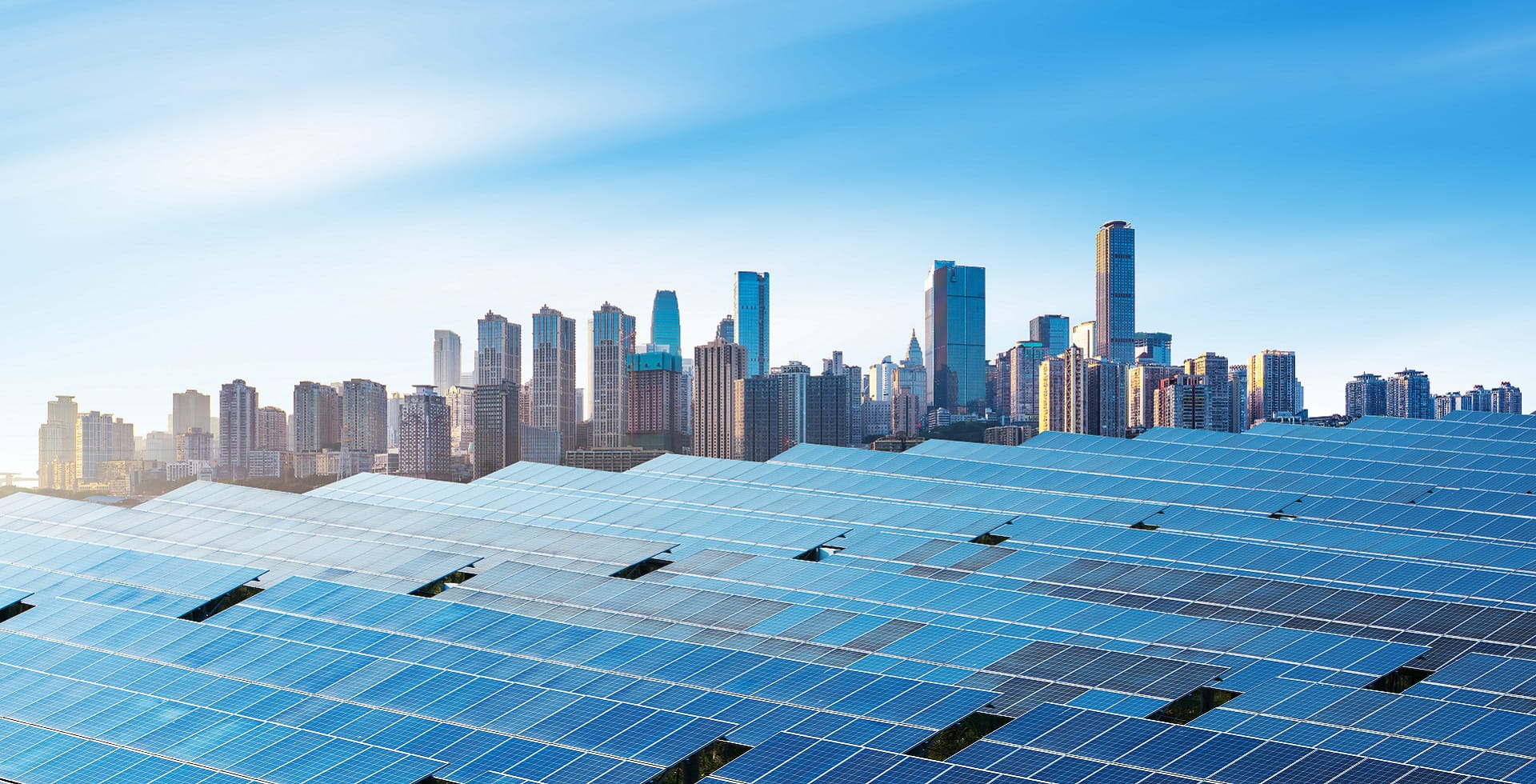Tackling air pollution with sustainable investments

Summary
Anthropogenic air pollution constitutes one of the most serious threats to human health, affecting lifestyle habits as well as causing deep social concerns and economic disruption. The deterioration of air quality – both outdoor and indoor – not only costs innumerable lives, and significantly diminishes life expectancy but is also a major burden on the global economy, triggering billions of costs. Explore how sustainable investments can help to address the most pressing air-pollution-related challenges.
Key takeaways:
- Anthropogenic air pollution constitutes one of the most serious threats to human health, affecting lifestyle habits as well as causing deep social concerns and economic disruption.
- The deterioration of air quality – both outdoor and indoor – costs innumerable lives, and significantly diminishes life expectancy.
- As stated by the World Health Organisation (WHO), “91% of the world’s population breathes air that is not safe.”
- Air pollution is also a major burden on the global economy, triggering billions of costs due to, amongst other things, work absence and lower productivity.
- Investments in innovative companies that produce clean energy from sustainable sources, or manufacture highly elaborate industrial filtration systems, can help to address the most pressing air-pollution-related challenges
Summary
- Anthropogenic air pollution constitutes one of the most serious threats to human health, affecting lifestyle habits as well as causing deep social concerns and economic disruption.
- The deterioration of air quality – both outdoor and indoor – costs innumerable lives, and significantly diminishes life expectancy.
- As stated by the World Health Organisation (WHO), “91% of the world’s population breathes air that is not safe.”
- Air pollution is also a major burden on the global economy, triggering billions of costs due to, amongst other things, work absence and lower productivity.
- Investments in innovative companies that produce clean energy from sustainable sources, or manufacture highly elaborate industrial filtration systems, can help to address the most pressing air-pollution-related challenges
Tackling air pollution with sustainable investments
|
“Air pollution is an invisible killer that we may face on a simple walk home or even in our home.” 1 |
Together with the mostly uncontrolled burning of agricultural and municipal waste, the combustion and evaporation of fossil fuels – mainly from power plants, industry and vehicle engines – represent the main source of polluted air.
Sources of some key air pollutants

Source: International Energy Agency 2016.
Fossil fuel combustion also marks the starting point of a “vicious circle” that leads to continuous production of particulate matter and greenhouse gases (GhGs). Every day this loop affects billions of people globally, as they go about their usual outdoor activities, constantly exposed to health-threatening microscopic – and hence invisible – air pollutants (fine particulate matter, PM2.5).
The "vicious circle" of air pollution

Source: https://aqli.epic.uchicago.edu/wp-content/uploads/2021/08/AQLI_2021-Report.EnglishGlobal.pdf
But the invisible killer is also lurking indoors, causing millions of premature deaths a year, and is primarily caused by activities such as cooking and heating over open fires with solid fuels like wood and other biomass-based fuels.2
How air pollution affects our health
Temporary effects of air pollution on our health include eye, nose and throat irritation, as well as wheezing, coughing, chest tightness and breathing difficulties.
Long-term exposure to air pollution may cause cancer and damage to the immune system. It can severely affect neurological, reproductive and respiratory systems, and lead to an increased likelihood of cardiovascular diseases. Poor air quality increases the risk of heart attack, and can worsen existing lung problems, such as asthma. In extreme cases, air pollution may even cause death.
Conversely, a reduction in air pollution in line with the WHO guidelines could lead to a prolongation of the average global life expectancy by 2.2 years.3
Growing urbanisation as a primary source of dirty air
Estimates suggest that by 2050 around two-thirds of the global population (i.e., 6.7 billion of approx. 10 billion people) will be living in urban settings. Considering that cities already generate 70% of global carbon emissions, and consume two-thirds of the world’s energy,4 the significance of fostering concepts for a greener and more sustainable urbanisation, hand in hand with more sustainable construction and transportation systems, becomes even more obvious and urgent.
|
According to recent studies, residents of the most polluted areas of the world could see their life expectancy cut short by five years, or even more.5 |
1. Outdoor and indoor air pollution of buildings
The rapid increase in an urbanised population is accompanied by a growing need for housing and commercial buildings. During their whole lifecycle, such constructions have an environmental impact that contributes to air pollution.
Processes like excavation, brickmaking and transportation of construction waste lead to higher emissions,6 and consequently to a higher concentration of particulate pollutants.
Studies suggest that more efficient brick-firing can lessen the pollutant emissions by over 90%.7
From an indoor-air-pollution perspective, natural or passive ventilation of buildings favours the ingress of polluted air. With deteriorating outdoor air, and with rising temperatures due to climate change, it is expected that by 2050 the global energy demand from air conditioners will triple. This will lead to an even higher demand for energy and have significant impact on global air quality. Considering that indoor air pollution is responsible for the deaths of 4.3 million people annually,8 appropriate heat-trapping and energy-efficient filtration systems can help to not only reduce emissions and energy usage, but also lower the overall operating costs for end-users.
2. Mobility and transportation
In order to provide healthier air quality in urban settings, investment is needed to “de-carbonise” public transportation systems and individual mobility. Although several cities and governments are gradually reshaping the future of transportation by:
- incentivising and subsiding the production of EVs, and a comprehensive charging infrastructure.
- turning their public transportation fleets carbon-neutral
traffic-related air pollution of urban centres is still a significant contributor to the emission of particulate matter.9
Banning gas and diesel vehicles from city centres, or even banning their sale and at the same time boosting EV or hydrogen-fueled cars, is undoubtedly a step in the right direction to fighting air pollution. Accordingly, economic or regulatory backdrops serve as catalysts, as they support the growth and market penetration of carbon-neutral mobility.
Still, more action is needed, to at least meet the corresponding SDG targets 3.9.1 (reduction in deaths and illnesses from air pollution), 7.1.2 (access to clean energy in homes) and 11.6.2 (reducing the environmental impact of cities through improved air quality).
The cost side of air pollution
In 2018, air pollution triggered a staggering cost of USD 2.9 trillion to the global economy, corresponding to 3.3 % of the world's GDP. In the same year, unhealthy air quality caused 1.8 billion days of work absences worldwide.10
Other estimates suggest that air pollution accounts for USD 5 trillion, annually, in welfare costs for the global economy. 11
The Economic Burden of Air Pollution

Source: Statista, Greenpeace, Centre for Research on Energy and Clean Air
Comparing these enormous costs resulting from air pollution with the investments aimed at mitigating the impact of this “invisible killer” on human health, there is an evident imbalance. This is the case not only when it comes to private funding vs. investments needed, but also with regard to global development aid.
The disparity becomes even clearer when looking at the analysis “The state of global air quality funding 2021”.12 According to this report, between 2015 and 2020 only 0.7% of total development finance was spent on air pollution-related projects, with most of the funds coming from multilateral development banks.
With approximately USD 6 billion, China was the largest recipient of funding linked to improving air quality, followed by Mongolia, the Philippines and Pakistan. India, although accounting for over 1 million premature deaths annually from air pollution, ranked eighth.
In a nutshell, countries in developing markets that are disproportionately affected by air pollution, and shouldering heavy economic burdens, have the least access to affordable health services and financial resources to protect them from pollutants.
Allianz Global Investors identifies innovators to address air pollution
While the combustion of fossil fuel is still the main source of air pollution, the transition to a fully carbon-free power supply and carbon-neutral mobility is well under way to help address this.
To accelerate the transition, and address air pollution-related challenges, Allianz Global Investors identifies innovators providing electricity from renewable energy sources, and industrial filtration, that meet the highest requirements. We invest in key enablers that manufacture emissions-control catalysts for power generation – as well as dust, fume and mist collectors, and air filtration systems used in industrial gas turbines.
We also continue to look at companies that produce automotive catalysts used to clean the exhaust gases from internal combustion engines, and materials for long-lasting lithium-ion batteries to pave the way for a greener mobility.
Investments in such companies can help to redirect capital towards more sustainable solutions that contribute to improved outdoor and indoor air quality and mitigate the impact of the “invisible killer” air pollution on human health and on global economic output.
1 Source: World Health Organization
2 Source: “Household air pollution and health” by World Health Organization (22 September 2021)
3 Source: Air Quality Index by Energy Policy Committee of the University of Chicago (September 2021)
4 Source: World Cities Report 2020: The Value of Sustainable Urbanization by UN-Habitat
5 Source: Air Quality Index by Energy Policy Committee of the University of Chicago (September 2021)
6 Source: World Green Building Council
7 Source: World Green Building Council
8 Source: Clear Air Fund Organization
9 Source: Urban policy interventions to reduce traffic emissions and traffic-related air pollution: Protocol for a systematic evidence map by Environment International (September 2020)
10 Source: Statista, Greenpeace and the Centre for Research on Energy and Clean Air (February 2020)
11 Source: World Green Building Council
12 Source: Clear Air Fund Organization
Growth. The China Way.
Why China’s 2060 net-zero carbon goal matters today

Summary
Decarbonising a country that burns half of the world’s coal every year is a huge task. Yet the transition will bring investment opportunities in both “new-economy” and “old-economy” sectors.
Key takeaways
|









